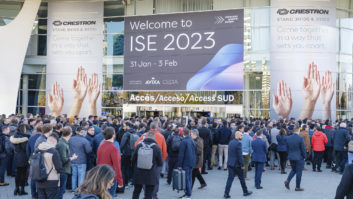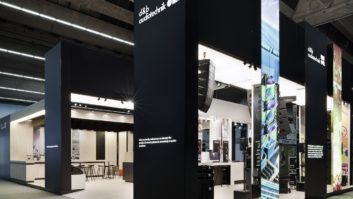 I am fortunate to work in a sector that is now absolutely integral to almost every type of commercial, retail, public sector or educational organisation.
I am fortunate to work in a sector that is now absolutely integral to almost every type of commercial, retail, public sector or educational organisation.
If 2020 taught me anything, it’s that for an organisation to be flexible and responsive to market changes, having access to the right technology is crucial. There were many lessons learned, not least how to embrace digitalisation, build a disruption response plan and put it into action.
The pandemic has accelerated the growth of certain technologies by five to ten years. I remember 1998 being hyped as ‘the year of video conferencing.’ That didn’t happen then, or any time soon after. But yes, finally, 22 years on, 2020 was that year. Usage statistics went off the chart.
To be fair, the barriers to adoption had already started to disappear; interoperability, easy deployment, and affordable pricing. The introduction of Zoom and Teams was addressing the key issue of accessibility. But there was still resistance to widespread adoption, from users who lacked education and confidence, and from organisations with concerns around bandwidth and security.
The pandemic forced their hand, and most discovered these worries were unfounded. Indeed, I predict that we’ll see the use of telephones drop away as video conferencing becomes the de facto way for organisations to communicate.
Another area that advanced dramatically because of Covid is the technology supporting collaboration solutions. Forced to work from home, it was necessary not only to communicate effectively, but to share data. Dispersed we may have been, but there was still a need to work on projects together as a team. Most of us now take for granted easy file sharing, chat functionality, shared calendars, multi-screen sharing, white-boarding and even virtualisation features.
It’s often been said that audio is the poor relation in AV. I think that has now been turned on its head. Clear audio is the key to effective remote communication. I am seeing a huge growth in audio technologies that aim to improve the aural experience for remote attendees, and that is having a knock on effect into meeting rooms, where ropey sound is now less tolerated.
A lasting impact of Covid may well be that strategic emphasis shifts from real estate to digital estate. With so much talk about hybrid working in the corporate sector, and any survey you care to read showing a majority of workers preferring a choice of where to conduct their work, organisations must be questioning whether budgets should be diverted to digital solutions.
Are huge head offices going to be necessary in the future? Or will smaller hubs with state of the art technology, where people book space as needed, become the norm? Certainly I see some projects like large 50 seater board rooms declining, and space being redeployed to smaller but more functional meeting rooms. In higher education it’s a similar story. Students are demanding a flexible way of learning; yes, they want a campus experience, but don’t necessarily want to sit in huge lecture halls. Universities are finding ways to allow them to be on site but attend lectures from wherever they choose. The technology to allow this also opens up new revenue streams for the those who invest, allowing them to become truly global in their offering.
I am certainly having conversations with clients around these issues. What’s important is that manufacturers and integrators need to respond to these changing demands and be able to deliver appropriate solutions. That’s not new though. To survive, systems integration has always had to evolve.
When I started in the AV industry, every installation would be put out for tender. Today it is much more about long term relationships. Organisations want a trusted partner who understand their strategic objectives. They are demanding a full end to end service. The ability to offer everything from scoping through to servicing and each stage in between is becoming increasingly important. Developing these types of relationships takes time and hard work but is worthwhile. For the client, there’s continuity, consistency, standardisation and a known quality of workmanship. When an integrator really understands a customer, they can anticipate their needs and bring new technologies to them. The benefits to the integrator of such loyalty are obvious. It was those who had put in the effort to build these relationships that fared best last year.
Although it’s a little early to speculate on where 2021 will end up, as confidence grows, I think the industry will rebound strongly. My feeling is that many projects have been postponed rather than cancelled. The money not spent last year will be used to accommodate future projects, and that can only be good news. Maybe I’m an optimist, but I really do believe the future is looking bright.







